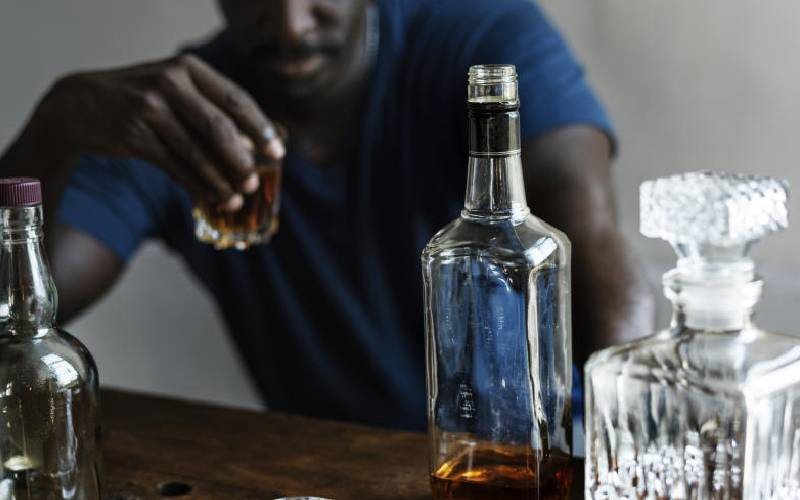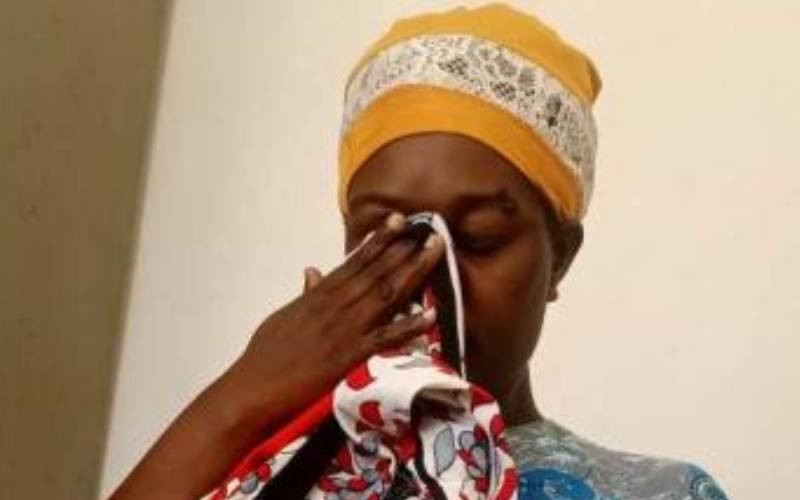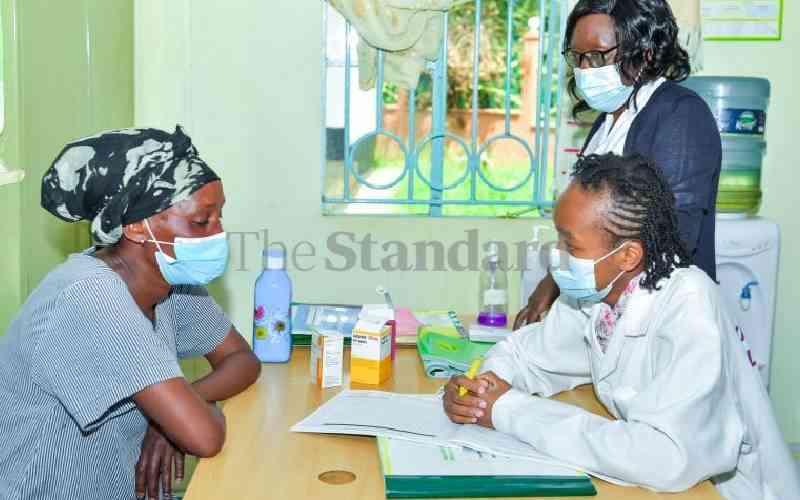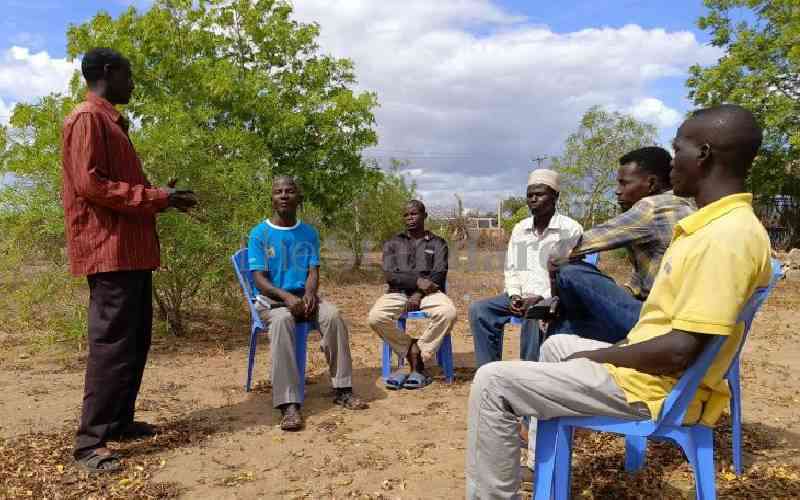
Health experts now say comprehensive education in schools on human sexuality will play a key role in the fight against HIV/AIDS among adolescents and young adults.
National Syndemic Disease Control Council (NSDCC) has said failure to address responsive sex in the demographic is likely to result in an endemic, despite the country working towards ending HIV by 2030.
NSDCC in charge of County Programs Dr Douglas Bosire said Kenya is currently observing a worrying trend of infections reported among adolescents that “threaten gains made”.
According to Bosire, the country is at a point of demographic transition of HIV transition from the older population to the younger population.
“We are seeing a trend that is not encouraging. This trend threatens gains made by an emergency of a disproportionately large number of infections among adolescents and young persons,” said Bosire.
Ministry’s data of 2023, the country reported 22,154 new HIV infections, out of which 41 per cent occurred among young persons aged between 15 and 24 years.
In the same year, we had about 3, 200 children aged between 10 and 19 years getting infected with the virus.
- Risk of new HIV infections up as teen pregnancies rise
- Stigma is highest contributor to new HIV infections
- Use of art proves vital in curbing teen pregnancies
- Nakhumicha banks on women leaders to end early sex, teen pregnancies
Keep Reading
“When these children get infected with the virus at an early age, yet they are supposed to be in school, grow to be productive Kenya’s, we lose demographic dividends of the young population as a country,” said the official.
He added, “We are worried when we look at the syndemic factors that drive up the cases, we find that there are indicators which are showing that young children are engaging in unprotected sex more than they were doing before,”

Bosire said equipping children with knowledge on the transition that takes place in the body is necessary for a social, religious and cultural respectively context.
“Together with the Ministry of Education, we have committed that we must work together to make sure that we give age-appropriate human, health, and sexual education to children who are in schools,” added Bosire.
The official added to end new HIV infections in adolescents and young adults, fighting the triple threat (sexual gender-based violence, unwanted pregnancies, and HIV infections) is key.
In ending the triple threat, he said a society approach is necessary because it brings together the government, private sector, civil society, development partners and other key stakeholders in addressing new HIV infections, unwanted pregnancies and sexual gender-based violence among adolescents and young people.
In 2023, Kenya recorded 252, 000 adolescent pregnancies.
The data further show that every day at least 690 adolescent pregnancies occur in children between 10 and 19 years.
Also, at least 37 per cent of individuals who visited Antenatal Clinics (ANC) were children aged 10 and 17 years.
“As a nation, we have to pose and ask ourselves, is that healthy for us, is that the way to go? No it is not the way to go” said Bosire.
He added, “Young children do not have negotiation power. They cannot negotiate for safer sex because perpetrators are older, and therefore hold more power than them in terms of energy physical, and financial. So the young girls are at a point of disadvantage,”
The inequities, he said, imbed Kenya’s journey to ending HIV as a public health threat by 2030
Nationally, 10 counties contributed to 53 per cent of all new HIV infections, among them Nairobi, Kisumu, Homa Bay, Nakuru, Siaya, Migori, Uasin Gishu, Kakamega, Kajiado and Narok.Bosire emphasised that despite the prevalence of HIV having reduced in counties like Homa Bay from 28 per cent recorded in the 1990s to 15.2 per cent in 2023, the number of adolescent pregnancies that trigger infections is on the rise.
In the county, one out of five children presenting themselves to Antenatal clinics (ANC) are aged between 10 and 13 years, representing 23 per cent of all pregnancies.
“Despite Homa Bay reducing prevalence and incidences, the cohort of young people engaging in unprotected sex threaten the gains the county has made,” said Bosire.
In Homa Bay, at least 120,600 people are living with HIV, among them 5, 565 children aged between zero and 14 years.
In 2023, the county recorded 313 new HIV infections in adolescents aged 10 and 19 years, while those infected between the ages of 15 and 24 years were 621.

Homa Bay County Health Executive Roselyne Omolo said three out of 100 girls in the county are either infected or affected by either early pregnancies, sexually abused or infected with HIV, while some suffer the three.
“The picture (triple threat) is really grim, but the biggest worry is this menace seems to be cyclical, you find a 13-year-old girl has a baby.
Six months ago, we did a small study in Ndhiwa and realised that there were women who were great-grandmothers at 39 years old. That means they had a baby at a very tender age, and that baby too could have had a baby, what one would call traditionally a curse when something happens in a community or family repeatedly,” Omolo said with an emotional feeling.
She attributed cases of triple threat reported in the county to high poverty levels.
As mitigation, she said the county is helping girls who got unwanted pregnancies admitted back to school, whereas those at risk are being trained on responsive sexual behaviours.
15.2 per cent and adherence is 70 per cent, good number of people tested are on ARVS. Mother-to-child HIV prevention stands at 5.3 per cent against 8.6 per cent nationally.
Kenya is leading end to triple threat in children with support from respective United Nations (UN) agencies.
The three-year program is set to be launched officially in Homa Bay County, where the agencies will get time to interact with girls and young women faced with the tragedy.
New HIV infections in adolescents and young adults are reported at a time Kenya is expected to be fund HIV programs, as donor funding comes to an end by 2027.
HIV is among programs heavily funded by donor, with Sh25 billion spent annually on ARVs.
“This (infections) is happening amidst financing transition from donor support to a country-sustained response. If we have to move, we have to close the tap, the tap are new infections,” observed Bosire.
Meanwhile, NSDCC is coming up with a program to engage men and boys as strategic of change because they are decision-makers in society.
 The Standard Group Plc is a multi-media organization with investments in media platforms spanning newspaper print
operations, television, radio broadcasting, digital and online services. The Standard Group is recognized as a
leading multi-media house in Kenya with a key influence in matters of national and international interest.
The Standard Group Plc is a multi-media organization with investments in media platforms spanning newspaper print
operations, television, radio broadcasting, digital and online services. The Standard Group is recognized as a
leading multi-media house in Kenya with a key influence in matters of national and international interest.











